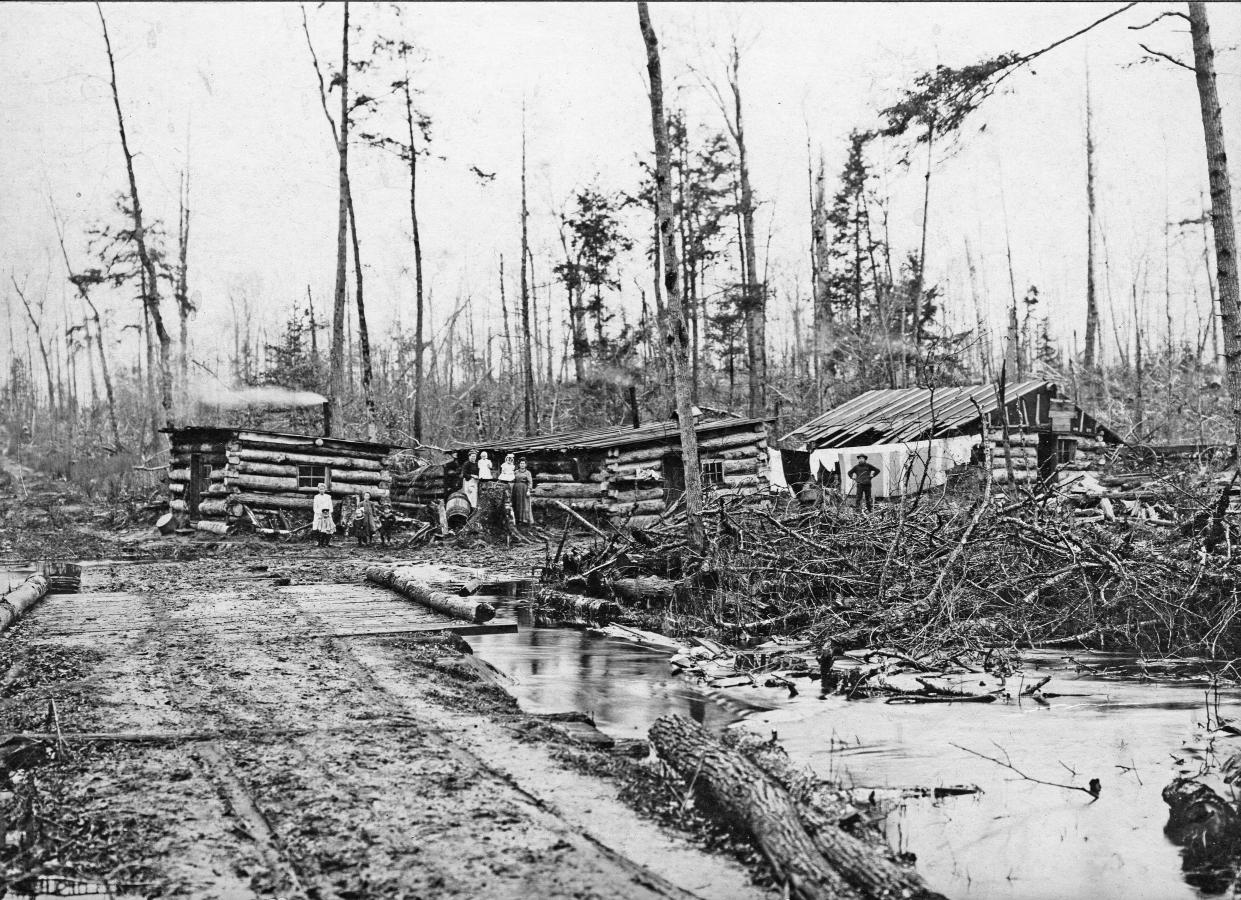Looking Back: Goodbye to big lumbering

CHARLEVOIX — One hundred and fifty years ago, the weather was playing games with Charlevoix much as it has been doing now.
It was reported several weeks ago that this El Nino year would bring lower than normal snowfall. Hah. Look what just happened.
In 1874, same story. What was anticipated to be a long, hard winter was, as reported in the Jan. 24 Charlevoix Sentinel, now causing the elderberry bushes to “bud out.”
And, contrary to what had happened in Lake Charlevoix’s totally frozen South Arm, “No ice can be seen on Lake Michigan from this point.”
Editor Willard A. Smith also reported that “The Leelanaw [sic] Tribune of a recent date says ‘Two men came from the Fox Islands to this place (the Leelanau Peninsula, probably Northport) in a small boat last Monday to procure supplies. They started on their return trip yesterday.’” For mid-January, that was a rare manna from heaven.
Smith also included an item that reflected the rapacity with which the West was being shorn of its wildlife, often destroyed simply for the mindlessly macho joy of killing for killing’s sake, the bloodlust thrill of the hunt. And it focused on a name that would itself be part of a western slaughter two years later. He would get as good as he gave.
Subscribe: Check out our offers and read the local news that matters to you
“General Custer reports that in three months, while on the Yellowstone expedition, he killed, with a single rifle, forty-one antelopes, four buffaloes, four elks, four bucktail deer, three American deer and two white wolves, besides geese, prairie chickens, and other feathered game in large numbers. He also says that the average distance at which the forty-one antelopes were brought down exceeded 230 yards by actual measurement, and that he rarely obtained a shot at an antelope under 150 yards, while the range extended from that distance up to 630 yards.”
Barstool bragging rights, here we come, and for what?
Fifty years later came the news that many had anticipated, but dreaded the arrival. Lumbering, which had begun in earnest in this region in the 1860s, had reached its destined end. There were no more first growth trees to topple. Just like fishing the lakes had been doing at the same time, just what the indiscriminate slaughter on the western plains had done, the American need to take and take until there was nothing left to take was looking into the abyss.
Charlevoix Courier, Jan. 24, 1924: “GOODBYE TO BIG LUMBERING HERE. Beattie Tract of Beech and Maple Vanishing. Gorham Company Completes Its Cut This Year—Nothing Left But Second Growth. Charlevoix is now witnessing the passing of the last tract of virgin timber in this locality.” The Gorham Brothers Company, based in Mount Pleasant, “have been taking out lumber and veneer logs on the Arthur Beattie farm, three miles south of town and now occupied by Louis Shapton.
“The farm from which the lumber is being cut contains about 60 acres of which some forty-odd is or was heavily timbered—mostly beech and maple. With the passing of this tract there is nothing left in this immediate vicinity but second growth and cut-over lands. Some of the logs they are taking out now are from ten inches to two and a half feet in diameter and from ten to sixteen feet long. Those employed are mostly farmers from the district. The Gorham people expect to finish the cut this year. About half of the stand was removed last year.”
The dimensions of some of this final harvest were a far cry from the magnificent widths and soaring heights the trees would have achieved had they been left alone. A trip to Hartwick Pines south of Grayling will confirm that.
Fifty years ago, Charlevoix was abuzz with the news that a gigantic, 52-acre multi-million-dollar development was planned for the west side of the highway at the Boyne City Road intersection.
Charlevoix Courier, Jan. 23, 1974: “PLANS TOLD FOR SHOPPING CENTER ON U.S. 31 NORTH. Construction of certain phases of the project are expected to start this spring with completion of the entire project in three to four years. The promoters, who chose to remain anonymous for the present, include two Charlevoix residents plus three downstate men—an architect, a builder and a manufacturer.” The land, once owned by pioneer farmer John Martin, would be triangular, bordered by the highway, Martin Road and Waller Road.
“Included in the development is an auto dealership, a grocery store, a department store, a furniture store, a branch bank, assorted shops, a motel, a restaurant, a nursing care center, a mobile home court, an area of medium-priced houses and a sheltered care facility for elderly persons who are atill able to care for themselves. The tract will also provide room for condominiums.”
However, myriad problems remained to be solved, mainly fluctuating water tables, drainage, septic systems and sewerage hook-up with the city. Doubt was expressed that the State Highway Department would ever approve of six access roads attaching onto the highway along such a short span.
“The developers declined to say what enterprises are interested in locating at this new site. They say the shopping area would be constructed as an enclosed, all-weather mall. Plans call for the construction of about 75 housing units, either as townhouses or four-plexes, with an average density of two housing units per acre.” There was even thought given to providing a seawall and boat dockage area on the north side of Round Lake for the home owners.
What would one have seen after driving west along Boyne City Road and stopping at U.S. 31? Across the highway, to the immediate left, a motel; directly ahead, a bank; to its right, the long shopping mall.
It never happened.
This article originally appeared on The Petoskey News-Review: Looking Back: Goodbye to big lumbering

